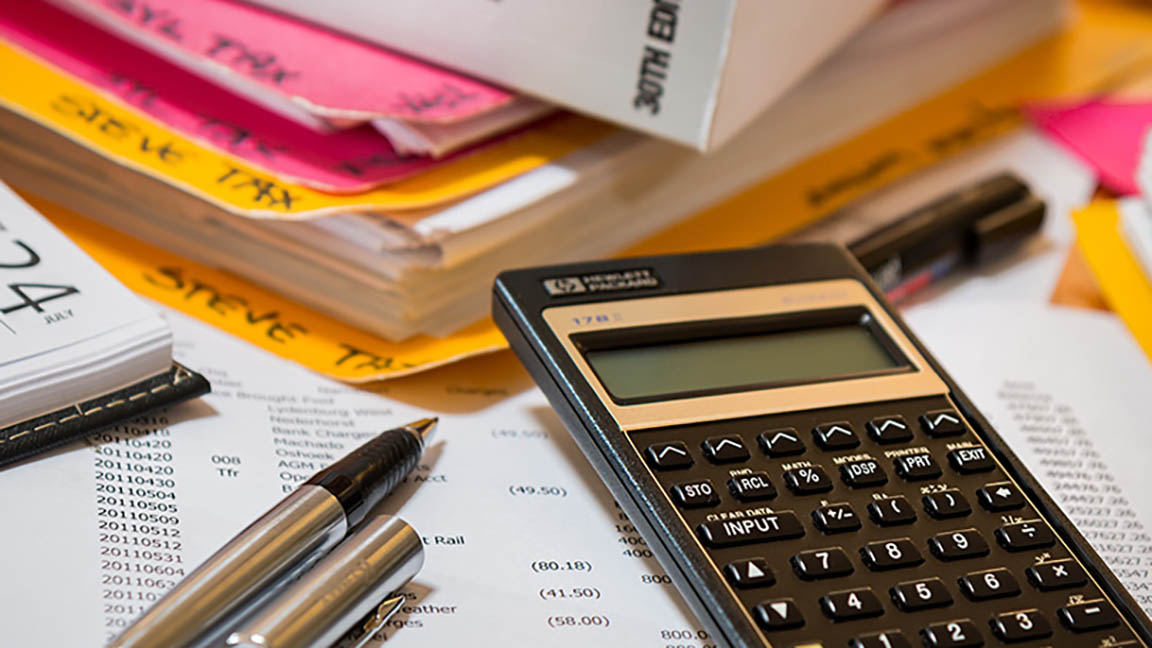Ag Producers Should Do Year-end Income Tax Planning
Agricultural producers should do tax planning before the end of the year.
December 20, 2023

NDSU Extension specialists advise that it is best to spread out income and expenses so producers don't have abnormally high or low income or expenses in any one year. (Photo courtesy Pixabay.)
by Kelli Anderson, North Dakota State University
“It is the time of year to think about year-end tax planning,” says Ron Haugen, North Dakota State University Extension farm management specialist.
“When tax planning, it is best to start with year-to-date income and expenses and estimate them for the remainder of the year,” says Haugen. “Estimate depreciation and include any income that was deferred to 2023 from a previous year. It is best to try to spread out income and expenses so producers don't have abnormally high or low income or expenses in any one year.”
Farmers and ranchers have until March 1, 2024, to file their 2023 income tax returns without penalty if they have not made estimates.
“Qualified farmers have until April 15, 2024, to file without penalty if they have paid their estimated tax deposit by January 16,” says Haugen, “I would encourage producers to think about making a deposit by January 16, 2024, if it looks like that will have a tax liability. That would give them more time to prepare their return and file on April 15.”
Here are several items to note for tax planning:
- Agricultural producers are allowed to use 200% declining balance depreciation for three-year, five-year, seven-year and 10-year property. A 150% declining balance is required for 15-year and 20-year properties.
- For most new ag machinery and equipment (except grain bins), the recovery period is five years.
- The Section 179 expense has increased. It generally allows producers to deduct up to $1,160,000 on new or used machinery or equipment purchased in the tax year. There is a dollar-for-dollar phaseout for purchases in excess of $2,890,000. Equipment must be above 50% business use to use Section 179.
- The additional 100% first-year bonus depreciation has been phased down to 80% for the 2023 tax year. It is available for used as well as new property. It is equal to 80% of the adjusted basis after any Section 179 expensing. This provision is scheduled to phase out over time. For 2024 it is scheduled to phase down to 60%.
- Net operating loss (NOL) carryback rules are in effect. Producers can carry back losses to offset income.
- Like-kind exchanges are not allowed for personal property, but are allowed for real property.
- Income averaging can be used by producers to spread the tax liability to lower income tax brackets in the three previous years. This is done on Schedule J.
- In North Dakota, producers may use Form ND-1 FA (income averaging) for North Dakota income tax calculations.
Other tax planning items to note:
- Crop insurance proceeds can be deferred to the next tax year if a producer is a cash-basis taxpayer and can show that normally income from damaged crops would be included in a tax year following the year of the damage. This would include prevent plant insurance payments.
- A livestock income deferral is available for those who had a forced sale of livestock because of a weather-related disaster. This is a very important consideration for producers who had to sell livestock because of drought. The IRS has two provisions for deferral. The first one is IRC 1033(e), in which a livestock producer who sells more draft, breeding or dairy animals than normal due to weather-related conditions may defer recognition of the gains for up to two years. A disaster declaration, is not necessary; however, if there is a federal disaster declaration, the replacement period is four years. The second provision is IRC 451(g), in which a livestock producer who uses the cash method of accounting can elect to defer for one tax year the income of any qualified livestock sold due to weather-related conditions.
- Prepay farm expenses. Feed, fertilizer, seed and similar expenses can be prepaid. Typically, discounts are received by paying for these expenses in the fall. Producers can deduct prepaid expenses that do not exceed 50% of their other deductible farm expenses.
- Defer income to 2024. Crop and livestock sales can be deferred to the next year by using a deferred payment contract. Most grain elevators or livestock sale barns will defer sales until the next tax year. Producers should be aware that they are at risk if the business becomes insolvent before the check is received and cashed.
- Purchase machinery or equipment. Machinery or equipment purchases can be made before the end of the year to get a depreciation or Section 179 expense deduction in 2023.
- Contribute to a retirement plan such as a simplified employee pension plan, savings incentive match plan for employees or individual retirement account.
Information on agricultural topics can be found in the Farmers Tax Guide, Publication 225. It can be obtained at any IRS office or ordered by calling 800-829-3676.
Additional questions on this topic should be addressed to your tax professional or the IRS at 800-829-1040 or https://www.irs.gov. North Dakota income tax questions can be addressed to the North Dakota Tax Department at 877-328-7088 or https://www.nd.gov/tax.
Editor’s note: Kelli Anderson is interim director of agriculture communications and information specialist for North Dakota State University.
Topics: Management , Business
Publication: Angus Beef Bulletin


